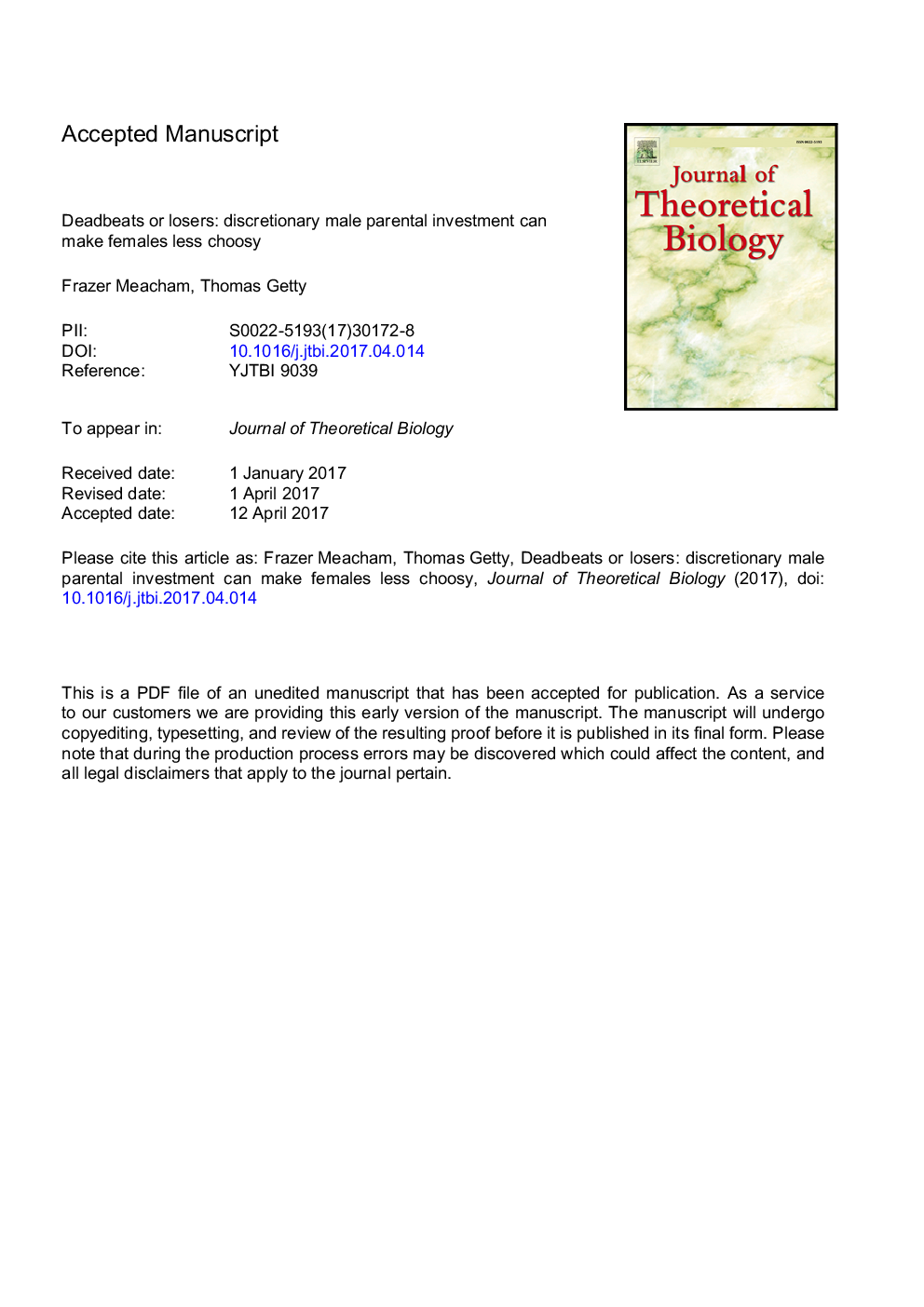| Article ID | Journal | Published Year | Pages | File Type |
|---|---|---|---|---|
| 5760088 | Journal of Theoretical Biology | 2017 | 22 Pages |
Abstract
Two of the most important reproductive decisions that animals face are how to choose mates and how to invest in offspring. In species where both males and females provide offspring care, these selection pressures will often be reciprocally intertwined: mate preferences may depend on parental investment patterns while parental investment patterns may depend on mate preferences. We describe and analyze a mathematical model of this interaction, in which females can choose amongst males who have high attractiveness or low attractiveness, while males can decide whether to provide offspring care. We compare the case where males decide whether to provide care to the cases where males always provide care and where they never provide care. For a wide range of parameter settings, we find that when males decide whether to provide care, females are selected to be less choosy. This reduction in female choosiness occurs even though discretionary male care leads to greater variation among males in their offspring output. This finding contrasts with previous theoretical studies, and is driven by our assumption that males can decide whether to help provide care after mating occurs. Our results show how the interdependencies between mate choice and parental care can generate outcomes that can only be understood by considering both processes simultaneously.
Related Topics
Life Sciences
Agricultural and Biological Sciences
Agricultural and Biological Sciences (General)
Authors
Frazer Meacham, Thomas Getty,
